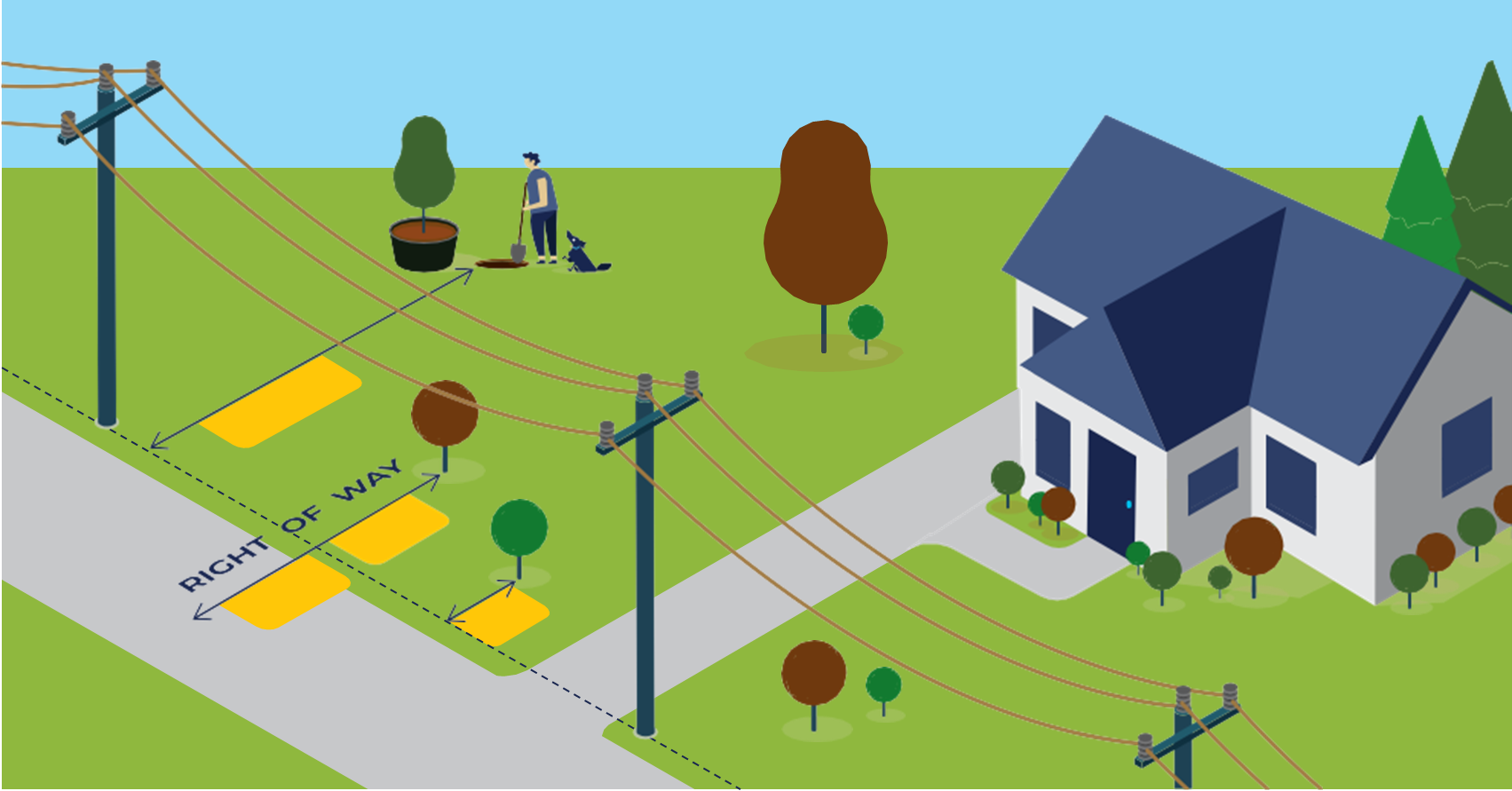MTE arborist says timing, location and species matter
Is your lawn in need of a landscaping makeover? If adding a tree or two is in your plans, autumn is the best time to plant them, says Bryon Smith, one of MTE’s team of certified arborists.
To protect your landscaping investment, you’ll also want to think about the long-term relationship between your trees and MTE’s electricity distribution infrastructure.
Growing a tree that provides beauty and shade in harmony with the need for reliable electricity requires planning and research. Timing, placement and species selection should all be factored into a tree-planting project.
Right time
Planting at the right time of year is a key factor in helping young, transplanted shade, flowering and evergreen trees reach a strong, healthy maturity.
“It seems counterintuitive to plant young trees just after you’ve been raking leaves, but that really is the very best time here in Tennessee,” Smith said. “Planting during the tree’s dormant season minimizes stress.”
Fall’s cooler temperatures and milder weather allow roots to become established before the extreme heat of summer or deep freeze of winter. Early fall planting can also lead to earlier spring blooms for some flowering trees and plants. Fall weather can help reduce pests and diseases that might hinder new growth.
Smith recommends planting soon after the first frost of the season, which usually happens in late October to early November. During a mild winter, tree planting can continue up until the last freeze occurs, usually occurring early to mid-April.
Right tree
Understanding growth habits and planting the proper species for the location can reduce many tree-planting headaches. MTE’s list of recommended trees is available at mte.com/TreeAndVegetationManagement.
Smith has his personal favorites among the recommended trees. He likes the hardy American redbud, a tree native to Tennessee. He’s also partial to spring-flowering trees like the low-growing Kousa dogwood and Jane magnolia. The summer-blooming Yuma crape myrtle, which has a mature height and spread of 20 feet, is another favorite.
He urges homeowners to avoid planting tall, fast-growing trees like Bradford pears, silver maples or tulip poplars. “Unless you have a large piece of property and can locate these types of trees well away from the lines, don’t try it. They’ll get too big and be a problem,” he said.

• 20 feet or lower can be planted within the right-of-way if it is in a maintained yard setting. They can be planted no closer than 10 feet from the center of the pole line and no closer than 15 feet of any poles.
• 20 to 40 feet can be planted at the edge of the right-of-way, which is 20 feet from the center of the pole line.
• 40 feet or greater need to be planted a minimum of 40 feet from the center of the pole line.
Right place
When choosing the spot for your tree, carefully measure to ensure it will allow adequate clearance from MTE’s power lines when fully grown.
Failing to observe tree size restrictions for MTE rights-of-way can cause power interruptions, says Talley Floyd, MTE’s vegetation program manager. An outage can occur when branches contact the lines or when trees fall onto them.
“Beyond your personal power service, that outage might impact a few hundred or even a few thousand services,” Floyd said. “Planting a tree in the wrong place could result in a power interruption that impacts a crucial need like a hospital or nursing home.”
By following MTE’s guidelines and choosing the right tree for the right location, you can enjoy a beautiful landscape while ensuring the safe and reliable delivery of electricity to your home and community.
Here to help
Need additional advice from MTE’s certified arborists? Try one of these options:
- Download a recommended tree list and read tree selection and care resources from the Arbor Day Foundation on the co-op’s website at mte.com/TreeAndVegetationManagement.
- Call the co-op’s vegetation management number at 877-414-7685 or email your question to vegetationmgmt@mte.com.
